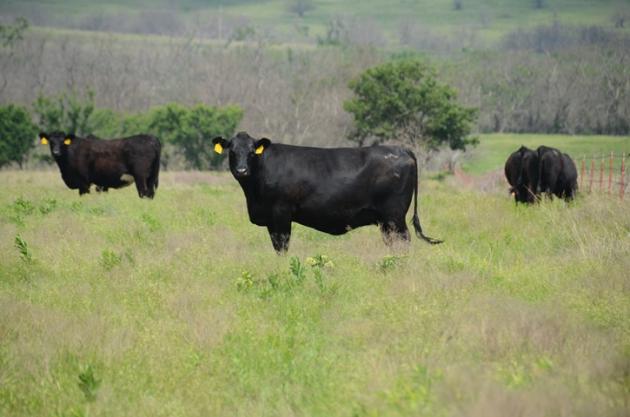
By Derrell Peel, Oklahoma State University Extension
The U.S. beef cow herd was 31.2 million head on January 1, 2017. The beef cow herd has expanded a total of 7.3 percent since the recent low on January 1, 2014 (Table1). The inventory of beef replacement heifers relative to the beef cow inventory is the best indication of future beef herd expansion. The January 1, 2017 ratio of replacement heifers to the cow herd was 20.6 percent, down slightly from one year ago. The 2016 ratio of 21.0 percent was the highest in 48 years. The heifer ratio has been sharply highly since herd expansion began in 2014 with the last three years having the three highest levels since 1969. The four-year average since 2014 is 20.4 percent. The average for the 25 years prior to 2014 was 17.3 percent. The current ratio of beef replacement heifers to the cow herd suggests that herd expansion will continue relatively aggressively in 2017. There are differences across regions, however.
Table 1.
|
Region |
Beef Replacement Ratio (beef replacements as % of beef cow herd) |
% of beef cow herd* |
% change in cow herd |
||
|
2017 |
2014-2017 |
1989-2013 |
2017 |
2014-2017 |
|
| Northwest |
21.3 |
21.3 |
21.1 |
4.1 |
+6.4 |
| Southwest |
21.5 |
21.5 |
18.3 |
4.5 |
+3.6 |
| N. Rockies |
28.4 |
28.2 |
24.4 |
7.0 |
+1.4 |
| S. Rockies |
23.6 |
22.9 |
17.9 |
4.1 |
+13.7 |
| N. Plains |
21.7 |
21.8 |
16.4 |
14.5 |
+4.0 |
| S. Plains |
19.3 |
19.0 |
15.9 |
26.0 |
+14.1 |
| Great Lakes |
25.6 |
26.2 |
24.3 |
2.5 |
+10.0 |
| Midwest |
19.5 |
18.9 |
15.3 |
12.5 |
+9.9 |
| Gulf |
19.1 |
18.7 |
17.5 |
5.9 |
+2.7 |
| South |
16.9 |
16.0 |
14.3 |
6.7 |
+0.5 |
| Appalachian |
15.6 |
15.8 |
16.5 |
6.9 |
+4.5 |
| E. Seaboard |
18.1 |
17.9 |
17.6 |
3.8 |
+1.9 |
| Northeast |
35.4 |
34.8 |
28.4 |
1.3 |
+11.6 |
| U.S. |
20.6 |
20.4 |
17.3 |
|
+7.3 |
The long term average shows that beef replacement heifer ratios are generally higher in the northern part of the U.S. with the largest average ratios in the Northwest, Northern Rockies, Northern Plains, Great Lakes and Northeast regions. This may be due to the colder climate, different cattle types, and higher proportions of purebred operations. These regions currently account for 29.4 percent of beef cows. The lowest average ratio is found the South (AL, GA, FL) although the lowest ratio in 2017 is in the Appalachian region (KY, TN, WV). In fact, the Appalachian region is the only region where the 2017 heifer ratio is below the long-term average. This may indicate that little additional expansion is to be expected in this region. Based on the current heifer ratio compared to the long term average, the Northwest, Great Lakes, Gulf and Eastern Seaboard regions may also show relatively slower herd growth in 2017. Continued stronger growth is likely in other beef cow regions including the northern and southern Rockies, northern and southern Plains and the Midwest.
The Southern Plains (KS, OK, TX) is the largest beef cow region with 26 percent of the national total (8.13 million head in 2017) and has added the most beef cows of any region since expansion began. The region has added 14.1 percent to the beef cow inventory, accounting for 47.3 percent of the 2.12 million head of additional beef cows nationwide since 2014. Nevertheless, the current Texas beef cow inventory is still down more than 600 thousand head from average pre-drought levels. Herd expansion is expected to continue in Texas though a complete return to pre-drought levels may not be likely. The number of beef replacement heifers (and the heifer ratio) dropped in Oklahoma in 2017, suggesting perhaps a slower rate of herd expansion in the number two beef cow state this coming year. Oklahoma has already expanded rapidly since 2013 and is currently at the highest beef cow herd inventory in the state since 1984. Kansas is also at the largest state beef cow inventory since 1984.
